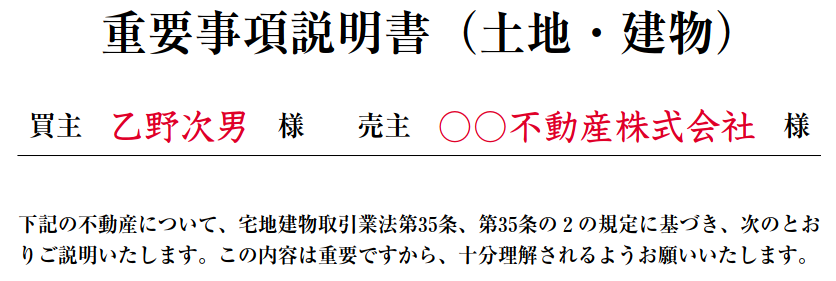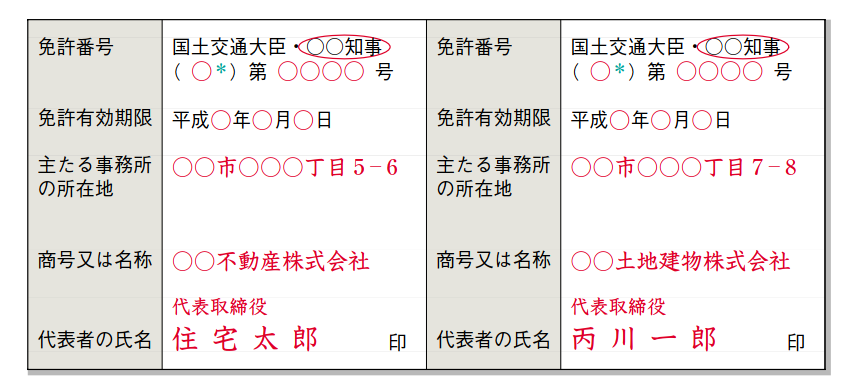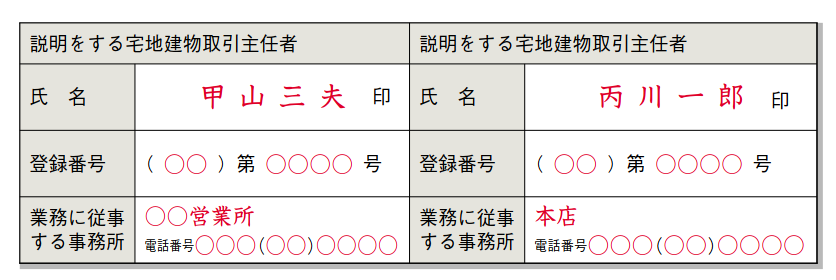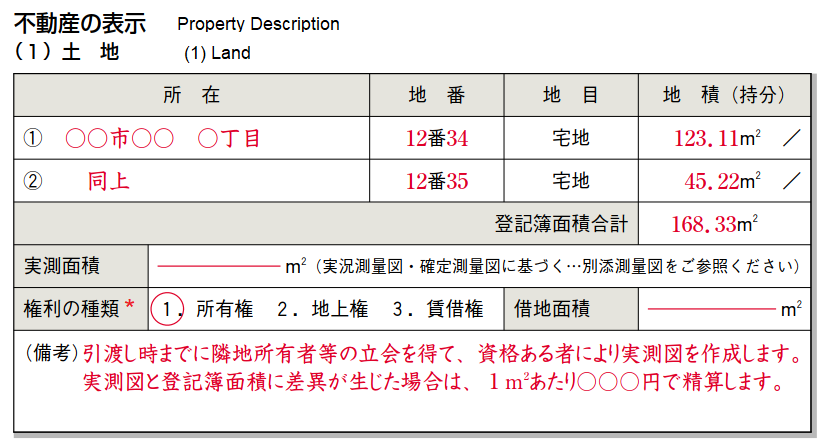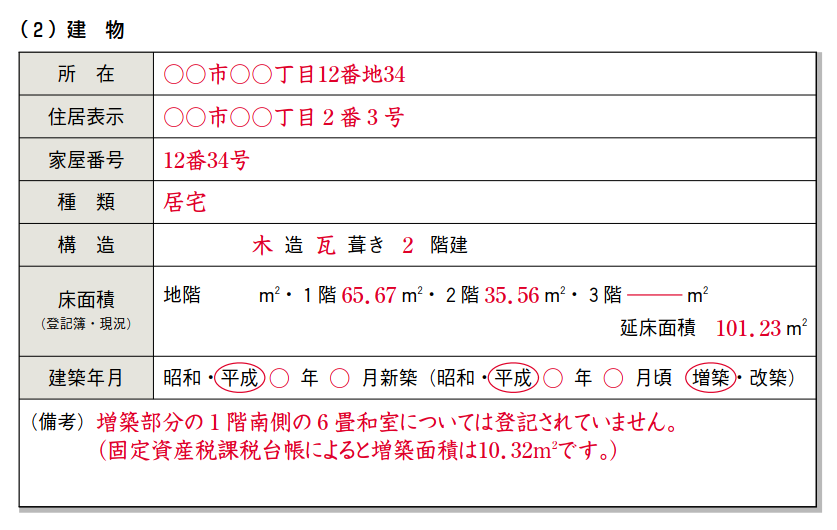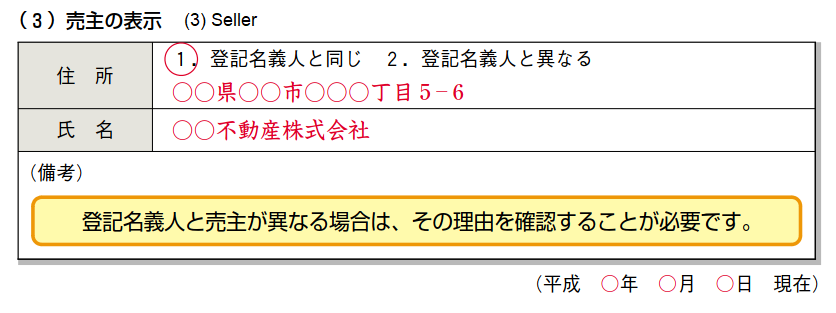Jyuyojiko Setsumeisho Sample for a Single-Family Home
The first very first line is the title of the document: Important Points Explanation (Land/Building).
The second line states (1) the name of the buyer/renter and (2) the seller/owner, and the lines below explain the purpose of this document: “The following details on the property have been written in accordance with Article 35 of the Real Estate Act. These essential points are to be understood by the parties involved.”
The second line states (1) the name of the buyer/renter and (2) the seller/owner, and the lines below explain the purpose of this document: “The following details on the property have been written in accordance with Article 35 of the Real Estate Act. These essential points are to be understood by the parties involved.”
The column below contains the information about the real estate agencies involved in this transaction: license numbers, addresses, and names that are validified by personal and company seals.
The second column contains the information about the real estate agents who explain the contents of the documents: names, license numbers, office names/phone numbers.
* The number in parentheses indicates how many times the license has been renewed, meaning that the larger the number, the longer the agency has been in the real estate business.
* The number in parentheses indicates how many times the license has been renewed, meaning that the larger the number, the longer the agency has been in the real estate business.
The next column states the conditions of the transactions: purchase/rent, owner/representative/intermidiary, etc.
In (1) the land description, the address/location, land type (residential, field, forest etc.), land area (㎡), measurement method, type of property rights (1. ownership 2. superficies 3. leasehold)* are indicated with notes if any, such as the comments below:
“The actual measurement drawing will be made by a qualified person with the presence of the neighboring landowner, etc. by the time of delivery. If there is any difference between the actual measurement and the registered area, the difference will be settled at ___ yen per square meter.”*Make sure to confirm the type of rights attached to the property (1. ownership 2. superficies 3. leasehold) upon concluding the contract, in order to avoid possible future dispute and trouble. Please also note the following with regard to land leases:
There are two types of land lease rights: superficies and leasehold. Although the superficies right is a very strong right, the leasehold right is the most common type of land leases. Leasehold rights are often not registered, but if you own a building on the land that is registered in the name of the leaseholder, you can use this to oppose a third party.
“The actual measurement drawing will be made by a qualified person with the presence of the neighboring landowner, etc. by the time of delivery. If there is any difference between the actual measurement and the registered area, the difference will be settled at ___ yen per square meter.”*Make sure to confirm the type of rights attached to the property (1. ownership 2. superficies 3. leasehold) upon concluding the contract, in order to avoid possible future dispute and trouble. Please also note the following with regard to land leases:
There are two types of land lease rights: superficies and leasehold. Although the superficies right is a very strong right, the leasehold right is the most common type of land leases. Leasehold rights are often not registered, but if you own a building on the land that is registered in the name of the leaseholder, you can use this to oppose a third party.
Notes: There are two types of land sales: registered land sales, in which transactions are conducted using the area described in the register, and measured land sales, in which the actual measured area is used as the transaction area. In the case of a sale by registry, the difference between the publicly offered area and the measured area will not be counted. It is important to confirm which method is used, registered land sales or measured land sales.
In (2) the building column, the address/location, house number, building type (residence, office, etc.), structure (wooden, RC, etc.), floor area (㎡)*, date of construction, and other details are indicated with notes if any, such as the comments below:
“The 6-mat Japanese-style room on the south side of the first floor of the extension is not registered. (The area of the extension is 10.32㎡ according to the fixed asset taxation ledger.)”
“The 6-mat Japanese-style room on the south side of the first floor of the extension is not registered. (The area of the extension is 10.32㎡ according to the fixed asset taxation ledger.)”
Notes: The current area of the building may differ from the area recorded in the registry for reasons such as the non-registered extension. Check official records such as the fixed asset taxation ledger to confirm the current area. Obtain the blueprint of the building, if available, as it will be useful when you consider remodeling the building.
In (3) Seller, the address and name of the seller and as of when (year/month/date) are indicated with notes if any.
Notes: If the registered owner and the seller are different, it is necessary to clarify the reason for the difference.
Notes: If the registered owner and the seller are different, it is necessary to clarify the reason for the difference.


